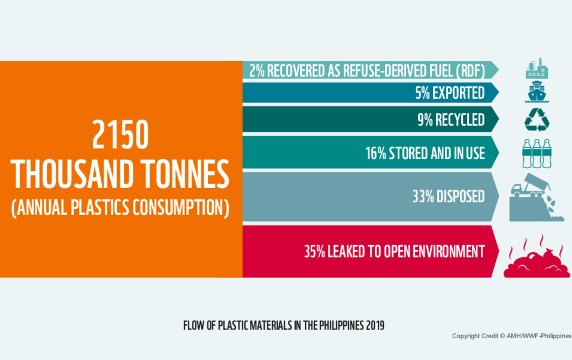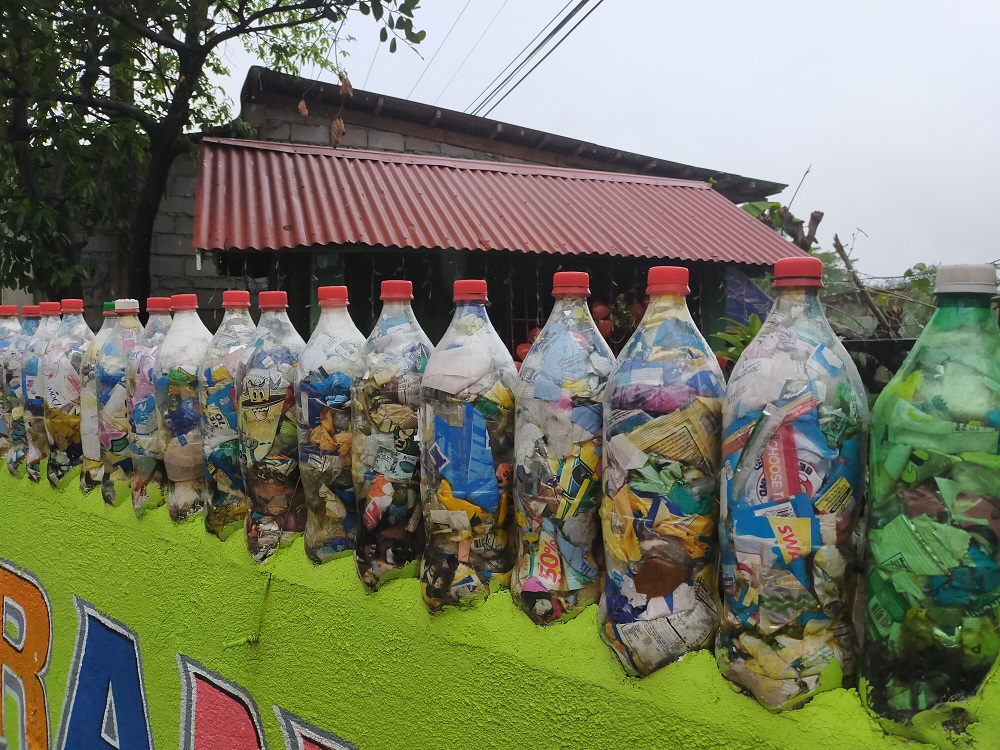Filipinos consume a yearly average of 20 kilograms (kg) of plastics, from which 15.43 kg per capita per year becomes waste, a new World Wide Fund for Nature (WWF) Philippines report detailing the flow of plastic materials placed on the market has found.
“Extended Producer Responsibility (EPR) Scheme Assessment for Plastic Packaging Waste in the Philippines”, the new report, also estimated that the Philippines leaks about 35 percent of plastic wastes into the environment.
The report also noted that the country has a low plastic recycling rate of nine percent, attributed to the high volume of low value plastics, including sachets; and insufficient recycling capacities for high value recyclables, such as polyethylene terephthalate (PET), polypropylene (PP), and high-density polyethylene (HDPE).
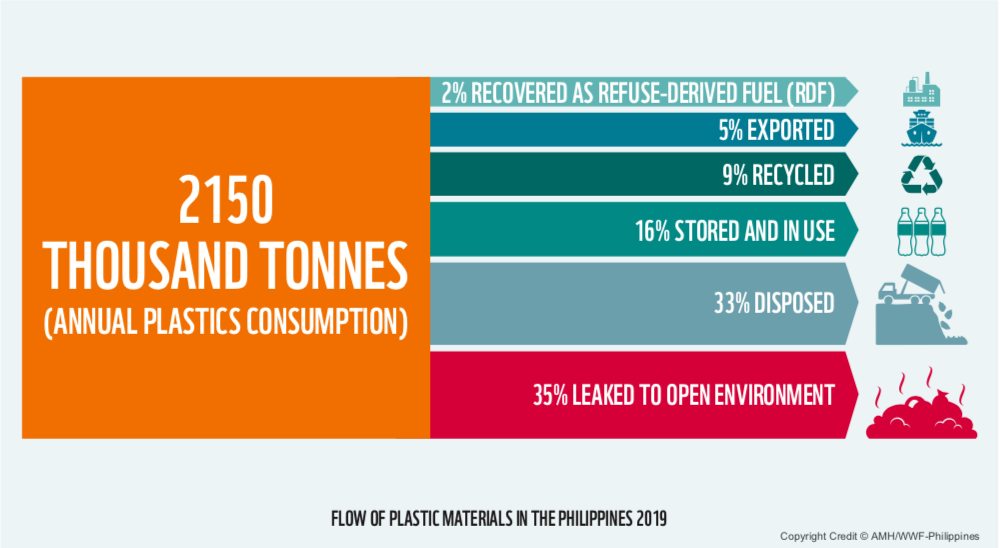
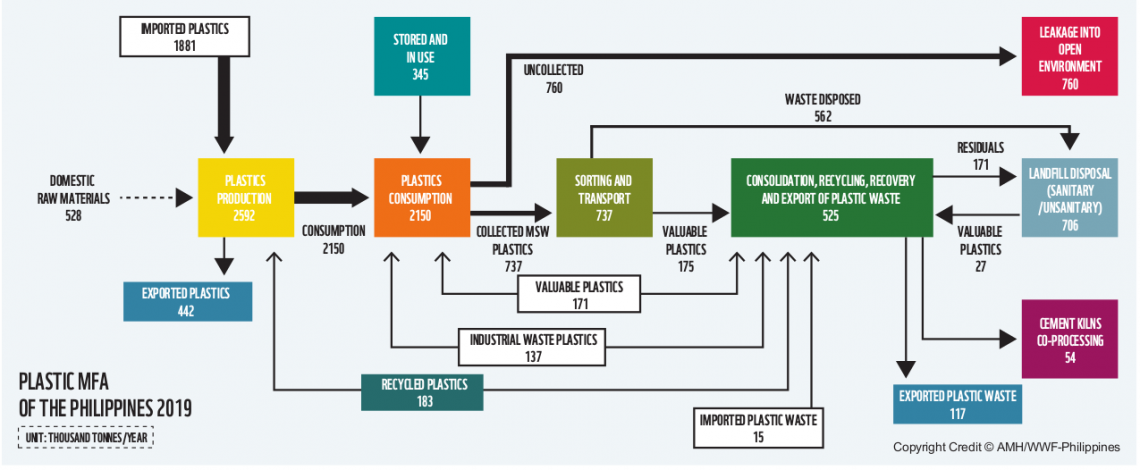
The report, undertaken with cyclos GmbH and AMH Philippines Inc., tracked the stream of plastic waste based on primary data and research from various government and private institutions to generate key amounts and rates for plastics production, consumption, collection, recycling, recovery, disposal, and leakage. The result is the “Plastic Materials Flow Analysis in the Philippines for 2019” chart below, which WWF said can be a reference point for future interventions to decrease the amount of plastics leaked into the environment, improve recycling rates of plastics, and facilitate design innovation.
These interventions, the report underscored, require the participation of businesses. The dire conditions have shaped WWF’s proposed mandatory EPR scheme in the Philippines, where concerned businesses are compelled to redesign their product packaging and eliminate unnecessary plastics within three years.
For this customized EPR scheme to work, the report emphasized that the responsibility of implementing the scheme for building high-quality recycling capacity should be assumed by a separate non-profit Producer Responsibility Organization (PRO), acting as the system operator, with strict monitoring and control systems carried out by the government.
“We in WWF believe that a mandatory EPR system is a way for businesses to be more engaged in eliminating unnecessary plastics through eco-design and strengthening waste management by being responsible for the end of life impacts of their plastic packaging,” said Czarina Constantino, WWF-Philippines’ national lead for the No Plastics In Nature Initiative and project manager for Plastic Smart Cities.
Nestlé Philippines is among the leading producers of fast-moving consumer goods (FMCG) in the country that have adopted the EPR scheme. This year, it became the country’s first food and beverage company to shift to paper straws in its locally manufactured ready-to-drink (RTD) products. Nestlé Philippines projects that its transition to paper straws will eliminate 130 metric tons of plastic straws by end of year.
“At Nestlé, we believe that tackling plastic waste cannot be successfully achieved by a single or linear solution. It requires the attention and action of different stakeholders. We must look into different options both upstream and downstream, and take a holistic approach as we continue accelerating our initiatives to tackle plastic waste and EPR is a major instrument,” said Arlene Tan-Bantoto, SVP and Head of Corporate Affairs and Communications of Nestlé Philippines.
However, Tan-Bantoto said that because Nestlé’s products are under the food category, the company will still have to prioritize the safety and health of consumers when redesigning the packaging. In the case of paper straws, it aims to reduce plastic components of the product that are hard to recycle and litter-prone.
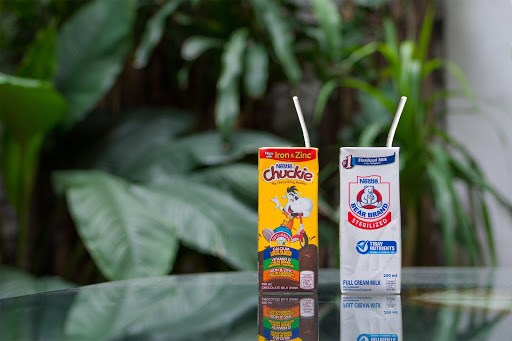
RTD brands CHUCKIE, BEAR BRAND (Sterilized, Fortified, and Yogu), NESCAFÉ, and MILO already utilize the paper straws in the 180ml and 200ml portion packs, while the 110ml and 250ml packs are currently in the pipeline for transition. Photo from Nestlé Philippines Website.
EPR is not a new idea. It has been introduced in the 90s, but WWF-Philippines said there is no clear, effective, and unambiguous legal framework yet towards EPR. The environmental group also noted that EPR mechanisms are aligned to the ASEAN Framework of Action on Marine Debris that enjoins member-states like the Philippines to develop and implement EPR policies and schemes.
“Addressing plastic pollution requires both upstream (production/pre-consumption) and downstream measures (consumption and post consumption). Working on the entirety of the plastic life cycle, stakeholder collaboration is important in both reducing the production and the consumption of unnecessary plastic, and also in managing plastic products and packaging, ensuring that materials are used as long as possible in our society,” said Joel Palma, WWF-Philippines’ Executive Director.
The study is part of WWF’s global “No Plastic in Nature” initiative to stop the flow of plastics entering nature by 2030 through elimination of unnecessary plastics, doubling reuse, recycling and recovery, and ensuring remaining plastic is sourced responsibly.
